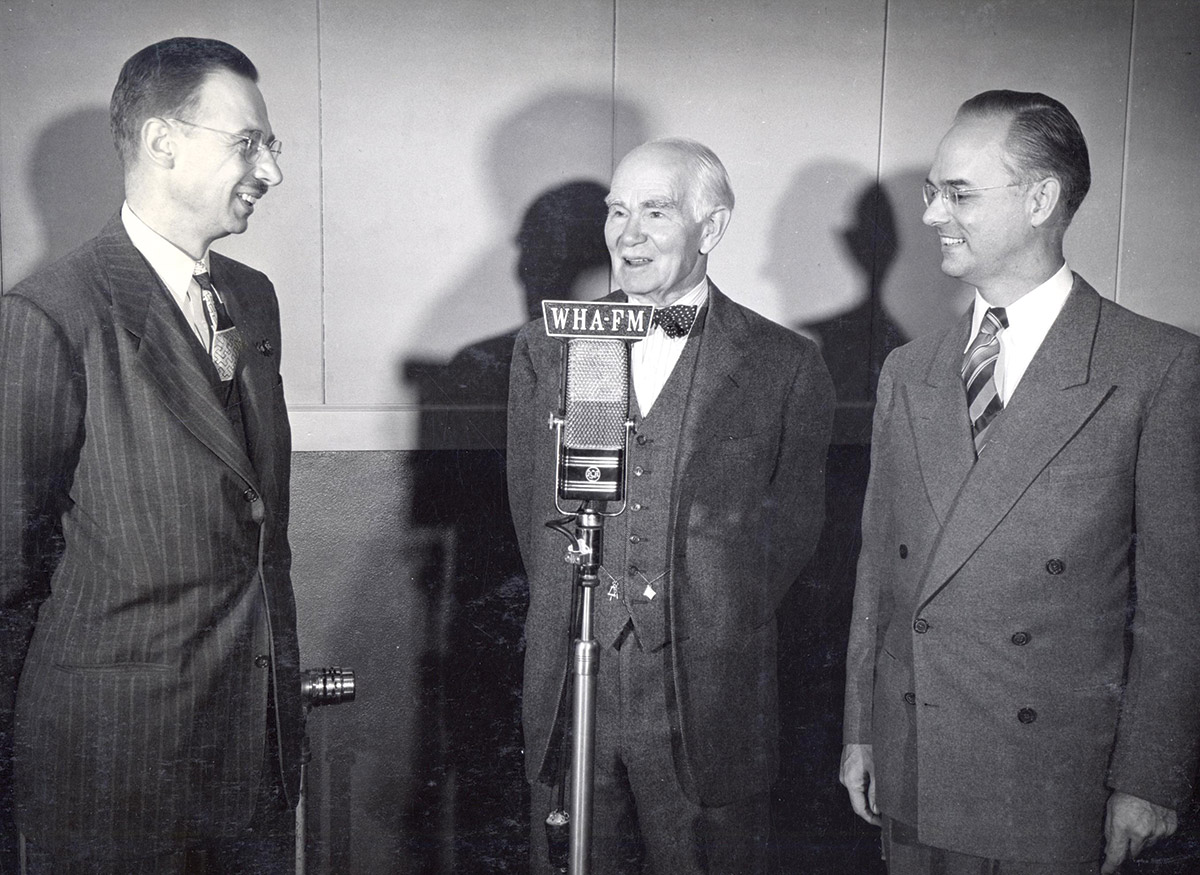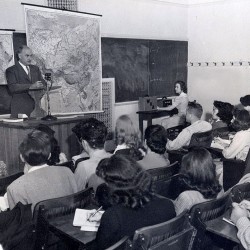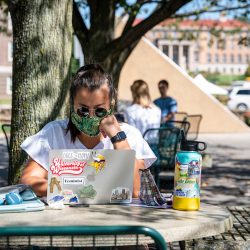Who Needs Classrooms?
UW–Madison pioneered distance education via radio and correspondence courses.

UW professors Harold Engel, Lee de Forest, and H. B. McCarty MA’30, seen here in the 1930s, used radio to broadcast university-caliber lectures into homes around the state.UW Archives S05820
In the spring of 2020, Badgers took their courses to go as a pandemic sent students away from the campus they love.
Although these drastic measures were certainly unprecedented, the notion of rendering courses mobile and adapting them outside the traditional classroom space is no novel concept at UW–Madison.
Professor Richard Ely — the same Ely whose contested work led the Board of Regents to establish the university’s commitment to “continual and fearless sifting and winnowing” — directed the UW’s first correspondence-study program upon his arrival at the university in 1892. By 1895, the program offered 63 courses in subjects ranging from botany and bacteriology to foreign language and literature. For one 16-lesson course, students paid four dollars, plus the postage for mailing coursework.
The correspondence-study program ran until 1899 and was reinvigorated in 1905 under the direction of university president Charles Van Hise 1879, 1880, MS1882, PhD1892. The program lives on today as Independent Learning and reaches students of all ages and regions.
The Wisconsin Idea inspired the university’s initial attempts at distance learning via technology. Physics professor Earle Terry MA1904, PhD1910 built the university’s first radio transmitter, possibly as early as 1902. Eventually dubbed 9XM-WHA, the station broadcast news and weather, and in the 1930s, it became a medium for education.
In 1931, WHA debuted its groundbreaking School of the Air, which drew on the UW School of Education in collaboration with teachers at Madison public schools to develop programs for elementary-age children.
The broadcast reached 70,000 students by 1938 and offered programs such as Journey in Musicland, Let’s Draw, and Afield with Ranger Mac.
In 1931, WHA also premiered the Wisconsin College of the Air, which featured educational programming geared toward adults. Its first course instructed listeners in touch typing. Some of its original programs ran for nearly 35 years, and while they now may be relics of radio’s past, the UW’s educational programming is still alive and well as University of the Air on Wisconsin Public Radio’s Ideas Network.
Remote education at UW–Madison has come a long way from snail-mail correspondence to pandemic-induced online courses. However sophisticated and widespread distance learning may look today, it all started with pen, paper, and the twist of a dial.
Published in the Fall 2020 issue



Comments
No comments posted yet.